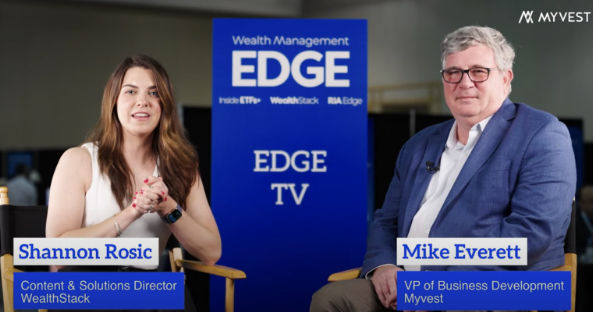Update: MyVest CEO Anton Honikman’s provocatively titled byline in wealthmanagement.com sounded the death knell for the Quarterly Performance Report, declaring “The QPR is Dead: The End of the Quarter is Just Another Day.” Challenging the long-held convention of the QPR’s absolute necessity sparked a lively exchange with another fintech veteran, Bob Miller of Private Client Resources.
The original byline is below, followed by Bob’s counterpoint and Anton’s counter-counterpoint.
The QPR is Dead: The End of the Quarter is Just Another Day
By Anton Honikman, MyVest CEO
The dreaded QPR hovers ominously over the client communications landscape four times a year. Every quarter-end, armies of people are mobilized to populate, validate, produce, in some cases (gasp!) print and snail mail static hard-copy reports on portfolio performance to their unsuspecting investors.
I believe this practice is fundamentally bad for our industry and for consumers.
And I’m not alone. I recently moderated a panel at the MMI Annual Conference about the impact of technology on client communications, where I posed this question to my fellow panelists:
In 5 years will the QPR be dead?
“I’d certainly like it to be.” – Tina Hurley, Managing Director, Individual Advice & Planning Solutions, TIAA
“I think the entire concept needs to be reinvented. We’re moving toward behavioral analytics, but it’s a slow process.” – Tricia Rothschild, Chief Product Officer, Morningstar
“Yes, and we’ll see a move toward more ad hoc reporting.” – Charles Smith, Executive Director of Wealth & Asset Management Advisory, EY
I was delighted to be in good company, but the industry is clinging onto the orthodoxy with white knuckles.
Contrary to popular belief, sending your clients a quarterly performance report is not a regulatory requirement. While the SEC requires custodians to “send account statements at least quarterly” there’s no such rule for advisors. It’s just that the QPR orthodoxy has become so entrenched that advisors either don’t question it or feel they can’t buck the trend for fear of being uncompetitive.
Wealth tech firms, including my own, are part of the problem. We provide pretty reports with convenient boxes for the necessary disclaimers that nobody reads. And many of us are investing more in our QPRs − custom report builders, natural language processing for personalized commentary, and more sophisticated analytics are all on their way.
Our customers will be well served, right?
Not necessarily.
Why are QPRs bad for the world?
Printing reams of unnecessary paper and mailing them across the country is terrible for the environment.
While many advisory firms have moved to making their quarterly reports available electronically, the age-old print-and-mail delivery method is more common than we may like to think. And the larger issue is that a QPR received electronically doesn’t solve the most basic problem of the report itself, which brings me to point #2.
There is nothing special about the end of the quarter.
A quarter end is nothing more than a convenient marker for repeatable portfolio evaluation over time, but it has nothing to do with the circumstances in a portfolio. Some event could occur the very first day after the quarter end, but that wouldn’t show up in the investor’s reports until after the following quarter end. Quarter-end evaluation cycles are likely an artefact of a bygone era in which prices on many instruments and markets were not available until the end of the quarter. That seems arcane in an era of real time pricing.
Portfolio Performance is not directly relevant to the financial wellness of the investor.
Much has been written on this topic so I won’t beat a dead horse — much as I’d like to. All that performance relative to a market index tells you is: a) whether you’re worse or better off than simply investing passively in the comparison index; and b) how one element of your portfolio market value has changed (contributions/withdrawals/income all influence market value too). If you’re a client centric advisor, index-relative performance is the wrong conversation to to be having with your client.
There is a better way.
Digital Only
No paper. PLEASE. Every advisor should offer an Investor Portal where a customer can access their reports electronically, even if they’re static QPRs (though they shouldn’t be, of course). Save trees. Lower your carbon footprint. Get with the 21st century.
QPR = Quarterly Progress Report
Instead of reporting on Performance, report on metrics that are more important to your clients’ financial wellness, like progress towards their goal(s).
On-Demand Interactive Analytics
Your reporting should support an investor’s inquiry, anytime, anywhere, and be based on current information. Your investors should be able to change inputs and check the outputs. Give them simulations to visualize their portfolio response in different scenarios.
Alerts
Some investors look at their portfolio daily, but most don’t. Provide value by alerting them to when they need to look at their portfolio. Some examples: when their probability of success of meeting a goal falls below a threshold; when elements of a financial plan are not in place when expected. Push those alerts to investors, prompting them to explore further and proactively engage with their own financial wellness when needed.
By embracing this new approach, your clients will be better served. The environment will be spared. Your firm will be able to smooth out the dreaded quarterly activity spikes, save on printing and postal costs, and engage in a tech-enabled more meaningful dialog with your clients.
So throw off the shackles of the 20th century. Dismiss the notion that you simply must compile and send those static reports to every single client, every single quarter. Let’s instead celebrate the death of traditional quarterly reports and the birth of digitally delivered, interactive analytics.
This article was originally published on LinkedIn and as a byline on wealthmanagement.com.
Counterpoint and Counter-Counterpoint
The Demise of QPRs is Greatly Exaggerated
In his counterpoint, “The Demise of QPRs is Greatly Exaggerated,” Bob Miller of Private Client Resources warns “not to throw the baby out with the bathwater,” lamenting the takeover of the industry by “robo-this, digital that.”
He contends that QPRs are invaluable for use with UHNW families for “comparative analysis between periods, investments, families and business interests, ultimately exists only in this bespoke and advisor-curated document,” but notes that “admitting that QPRs still serve a purpose is not a wholesale rejection of technology.”
Bob concludes by stating “the future is about enhancing the experience between QPRs and ultimately serving generations that follow in a way that suits them.”
QPR Disruption is Coming, Even for the UNHW
The most recent entry in this exchange comes as a counter-counterpoint from Anton with “QPR Disruption Is Coming, Even for the UHNW,” noting that “certain segments will be disrupted later than others in an industry that is finally being turned on its head by the digital revolution.”
While conceding that “the predictable, quarterly cycle provides a convenient apples-to-apples comparison across periods,” he still maintains that there is no stopping the QPR’s long march into obscurity. Ultimately, “we won’t throw the baby out with the bathwater, but let’s upgrade the plumbing.”


![MyVest CEO talks UMA upgrades and industry trends [FundFire]](https://myvest.com/wp-content/uploads/Fundfire.png)

![How to unlock tax savings in incoming client portfolios [Financial Planning]](https://myvest.com/wp-content/uploads/Anton-FP-.png)
![The Holistic Impact of Wealth and Retirement Plan Advisory M&A [PlanAdvisor]](https://myvest.com/wp-content/uploads/Screenshot-2024-08-13-at-9.50.52 AM.png)
